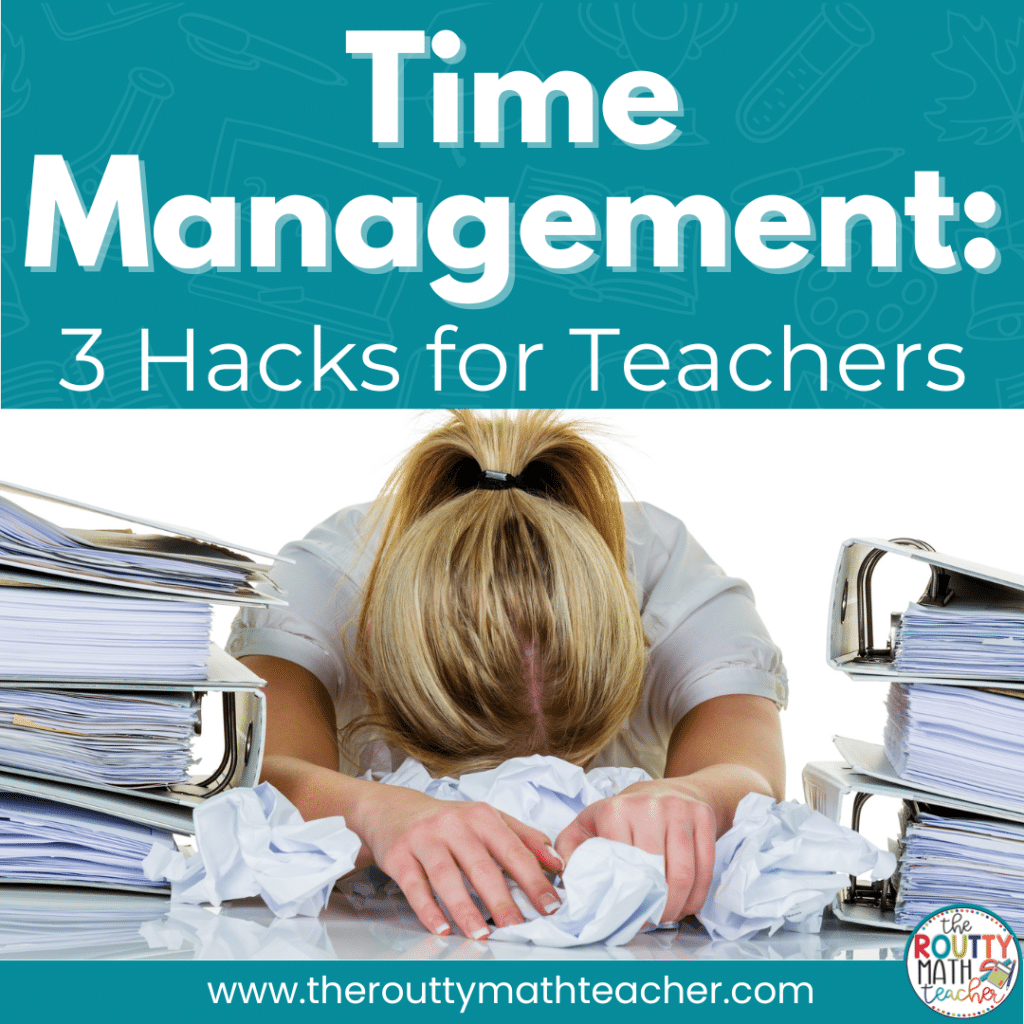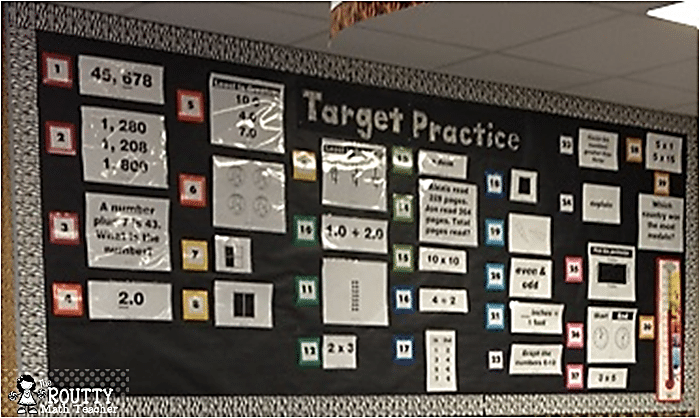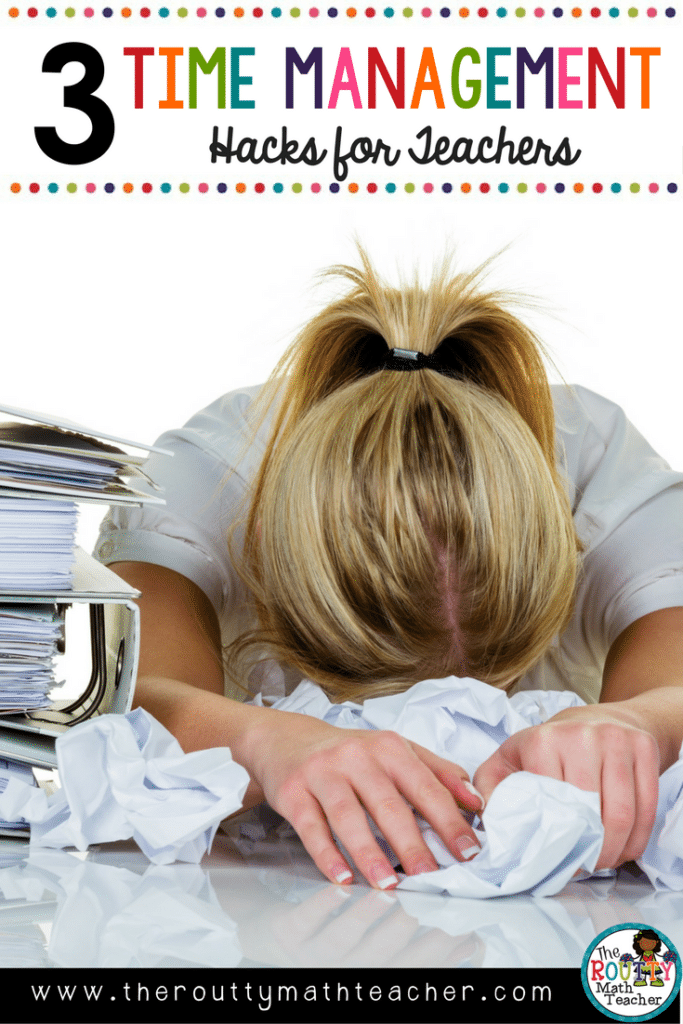
3 Time Management Hacks for Teachers


It was always around this time of year when I realized that I was going to run out of time to teach the content that needed to be taught by the time state testing rolled around. I would spend hours trying to figure out how I was going to get caught up– and fast. Then one day, I came up with what I thought was a brilliant idea. I decided that I would begin teaching some of the content that came later in the semester, right before the big test, in small bits during a random chunk of time that I had. (This random chunk of time occurred after my students attended specials, PE, Art, or Music, or lunch. The time was counted in our math minutes but it was detached from the large block.) My strategy ended up working beautifully and I not only got caught up but I had time to spare, so to speak.
Since then, I have developed a few other ways to help save time or make-up ground after getting behind, something that often happened because I teach at the pace of my students’ understanding, often spend several days on one lesson, and incorporate multiple activities (warm-ups, math starters, numerical fluency work, and problem-solving) into my math block on a daily basis. Read more about Math with Ms. Routt here.
With time management in mind, in today’s post, I’m sharing three time management hacks that I used in the classroom to help me stay on track to ensure my students mastered all of their grade level content and skills.
Hack #1: Graph of the Week- When I first started struggling with teaching all of my grade-level content and skills before our big state test in April, I decided to review my yearly scope and sequence and search for standards that were easy to teach, e.g. could be taught quickly and did not involve a lot of conceptual development. The standards that jumped out at me were my graphing standards. So, I decided to teach graphing in small doses throughout the week during one of the random chunks of time that I had.
Years back, the main graphing standards in fourth grade were related to students analyzing bar graphs and line graphs. At the time, I used a lot of material from Time for Kids. (I think we had a subscription but there were some web resources that were free.) Their teacher resources included a short article related to the top 5 __________. Many of these had data, like Top 5 Money-Making Disney Movies. I was able to take this data and create quick graphing activities/ questions to analyze for my students. Not only was this a fun activity because the topics were interesting and it gave me the opportunity to get my students thinking about graphs and how to analyze them.
Over the years, as the standards changed and became more complex, I adapted my strategy to begin during the first weeks of the year. Used this way, I created one graph with my students each week and we displayed the graphs in the classroom. Then we could refer back to them throughout the week. Using the random chunks of time to teach graphing gave me enough time to teach new graph types, create graphs, and analyze them (sometimes during more than one session). By the second semester, I had taught all of the graph types and could begin reviewing them each week, increasing the rigor of the task. Check out some of my graphing activities here. (Note: Now is a great time to start thinking about some authentic graphing activities that are coming up, e.g. Winter Olympics and March Madness. Read more about using these big events as opportunities for some real-world graphing here.)
Hack #2: Morning Work, Warm-ups, and Starters- Another strategy that I used frequently was to be very purposeful about the morning work, math warm-ups, and starters that I used.
- I used morning work to help students practice their computational skills. During this time, I selected one or two lengthy practice worksheets, full of naked problems for the students to complete. This strategy meant that I could move forward with the curriculum and provide additional practice opportunities for my students to rehearse their computational skills. (Note: Most of our work during the math block was about solving real-life problems using the computations, so morning work offered students the opportunity to practice without the word problems to slow them down).
- A comprehensive spiral-review warm-up can be a powerful tool because it allows you to review skills all year long. If you create your own warm-ups, you can use this time to increase the rigor so that you can discuss how to solve specific problems when you review the warm-up answers. Check out a picture of my favorite spiral-review below. This is a program that I created myself based on some similar ones that were available on the market. Students worked on their warm-up during the announcements (Yes, they can multi-task!) and we reviewed the answers during the first few minutes of my math block.

- I’ve written about starters a lot on this blog because they became so useful for me in the classroom. While they were mainly used to engage my students with challenging problems, I also used them to sneak in activities like “Number of the Day” and vocabulary review. In fact, there are some great resources related to number and fraction of the day activities that can be used to reinforce grade-level content and skills. In addition, using this time for vocabulary review can also be a great opportunity to support student mastery of skills. (Need some vocabulary ideas? Click here to check out this post that I wrote and grab the free resource.)
Hack #3: Math Stations- The last time management hack is none other than math stations! Last summer, I wrote a series about math stations where I created some videos describing how to implement a four- or five-station rotation, where the students complete one station each day. (Read more about my station rotation here.) When I use math stations in this way, my students get a good chunk of time to work, usually 15 minutes, and I can weave in old topics that the students need to review. And, if I am using a teacher station, I can re-teach content through this station or teach new content when I am behind schedule. Imagine how many standards can be reviewed with four or five stations a week over the course of a month– almost 20! (Note: I actually used math stations during that random chunk of time I mentioned earlier. In fact, I did the graphing activity on Monday and then did a four-station rotation Tuesday – Friday.)
With a little upfront and outside-of-the-box thinking, I was able to re-shape and mold my time to make the most of every instructional minute– just talk to any one of my students. They were ALWAYS working because I learned how to use the time I had to my advantage rather than let it stress me out.
Before I sign off, I would like to offer another time management tip. We all know that transitions eat up part of our day, especially when we have to take restroom breaks. In my classroom, I do not do large-group restroom breaks. We return to the classroom, start an independent activity, like spiral review work or problem-solving, and I release students one table or group at a time. When students go to the restroom in small groups, they are less likely to hang out in there or mess around. Make every minute count!
Sound Off! Share your favorite time-management hacks in the comments below.





